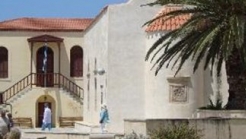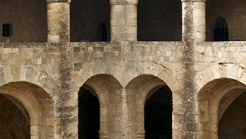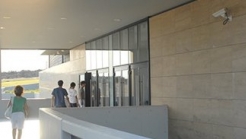

Greece
The Numismatic museum has always encouraged, and still does, the creation of new training programmes looking to make to the younger people knoen the importance of museums in society.
The Numismatic museum was founded in 1834, under the name «Royal Mint». In 1843, the museum was staged, along with the National Library, in a room of the University.
The museum’s collection was moved in 1890 in the eastern wing of the Sina academy, where for the first time a coin exhibition was arranged.
In 1893, the museum ceased to be a part of the National Library, moving to form an independent entity, under the name «National Coin Museum»
In 1898 the first numismatic publication the «Internation Paper of Numismatic Arachaelogy» was published, to the interest of many Greek and foreign scientists.
In 1940, when WWII broke off, all the museum’s coins were collected and secured in the Bank of Greece.
In 1946, following the liberation, the equipment of the museum wa moved from Akadimia to the first floor of the National Archaelogical Museum.
The new exhibition in the National Archaelogical Museum got it’s final form in 1956
In 1998 the opening of the permanent exhibition on the ancient greek coins took place on the first floor if the Ilion Melathron.
In 2007, a permanent exhibition for the history of the coin was completed, including the showcasing of coins from the Roman, Byzantine, Medieval and Modern era. Special units include the drachma, the medals, the currency and society.
The Numismatic museum has always encouraged, and still does, the creation of new training programmes looking to make to the younger people knoen the importance of museums in society. The Iliou Melathron with the currency treasures that it holds, uses for the first time in its cultrural and training schedules the modern technologies.
The Iliou Melathron is a combination of museum treasures in a historic building. A remarkable example of double showcasing of the cultural heritage, mobile and immobile in the center of Athens. Today, museums should not be restricted to the exhibition of ancient objects and their participation in scientific research, they should also organize events, whether they are related to the museums theme or not. This lays the foundation for human communication, and offers the chance for every visit to become a lifetime experience.<span style="\"font-size:" medium;\"="">


It is Moni Stavropigiaki, that was founded in the 16th century. Has played a major role in Cretan Revolts and indeed in the revolution of 1866, when there was shelter and center of rebels. There was very rich Single with large estates. In 1831 it was established that the first Greek school.


Rhodes Archaeological Museum contained prehistoric and Mycenaean artifacts, jars of the Geometric, Archaic and Classic periods, sculptures, writings, a collection of rhodian sealed jars, coins, a collection of the byzantine and medieval era as well as a folklorar collection.


The Museum, Pellas is located in the southeast of the foothills of the hill palace, in the northeastern part of archeological site
1039 Ε 6061 01515 00